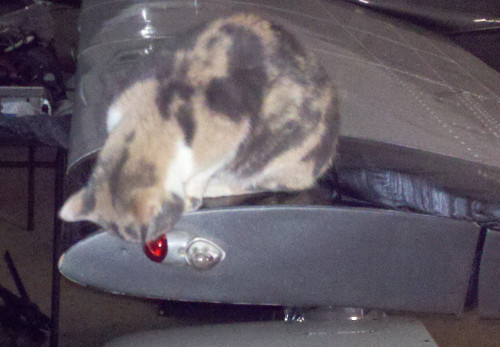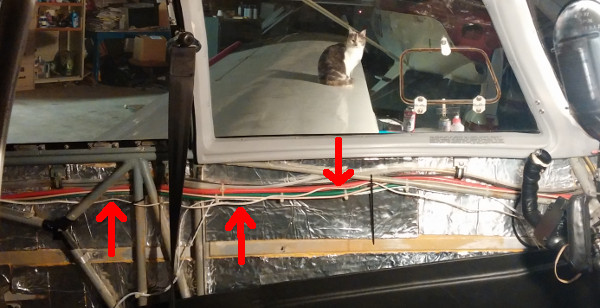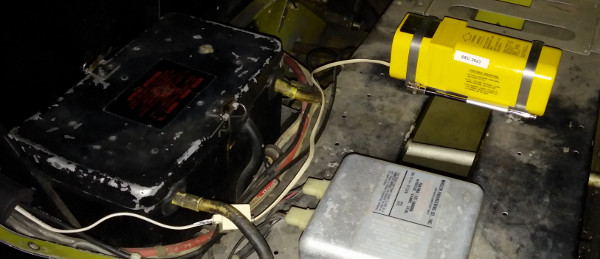Since we decided to have the engine overhauled for our airplane after the prop strike, and the airplane was going to be up for annual anyway, I figured that was a good time to take care of all the stuff that needed to be worked on and that would take calendar time, since the time was incurred anyway.
One of the things I knew was up was the ELT batteries. Every civil airplane in the US (with certain limited exceptions) is required to have an "Emergency Locator Transmitter" (ELT) on board. This activates if there's a sudden shock (because of a crash) and transmits a signal so that search/rescuers can locate the plane by radio signal. The ELT is internally-powered by batteries. Modern ELTs are supposed to have a panel in view of the pilot that allows the pilot to turn it on or off, and indicates whether its transmitting. In any case, I knew that the batteries in the ELT were due for replacing this annual anyway.
My plane didn't have an ELT panel, so I'd been thinking about that. So when I was at Oshkosh last year, I bought a used ELT (very cheap) with a new install kit. First, I thought that it would be interesting to look inside and see how they worked. Second, I though perhaps that the install kit would allow me to put a panel in properly.
So, first step was to look at the old ELT and replace the batteries. It turns out that there were problems with the old one; it had broken mounting. Its batteries were also the style that had to be replaced by a specialized battery pack, not with off-the-shelf batteries.
So I asked my mechanic if we could just use the used one that I'd bought, which, as it turns out, can be batteried with Duracell D-cell batteries. He said it was fine to do that, as long as it tests out correctly. The one thing I needed to do was to clean off the battery terminals. At some point someone had left batteries in it too long, and the terminals were a little green.
So here are the battery terminals, nice and cleaned up and shiny:

Here's the ELT sitting on the desk, batteries in and tested. The cord
is plugged back into the ELT itself to act as an emergency carry
strap. Patches the airport cat looks on.

Here's Patches inspecting the left wing navigation light.

One thing I had to do was run the control cable from the back of the
airplane where the ELT sits to the control panel, which I installed in
the front instrument panel. Here's the left side of the body, with
the interior mostly out, with the cable (which is really a phone wall
cable) installed and indicated with red arrows.

And here's a close-up of the center section:

And finally, the ELT installed and ready to go, with the cable plugged
in and the unit tested.
